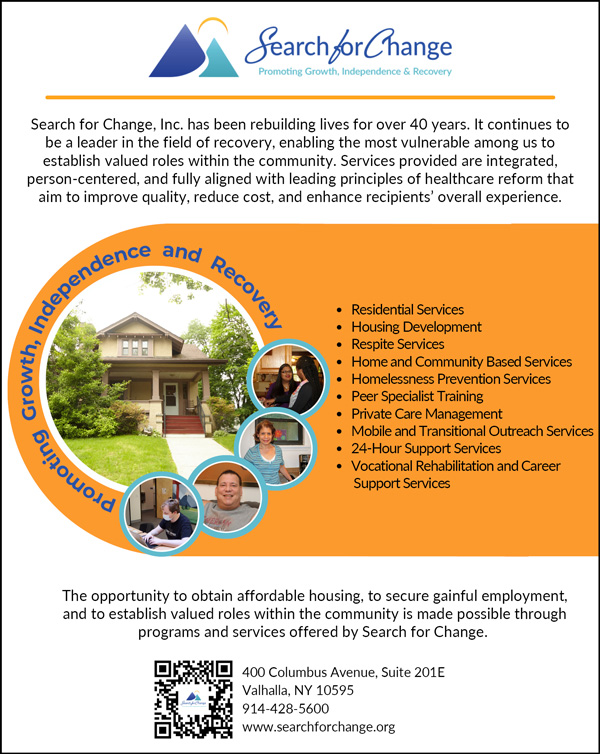America’s healthcare industry accounts for one fifth of its Gross National Product (GNP) and produces mediocre outcomes at best. Innumerable factors are implicated in this dysfunction, most of which are borne of a capitalist structure designed to maximize profits for its principal agents. This has produced a medical industrial complex continuously in pursuit of lucrative treatments that confer modest benefits at great expense to recipients. Potentially effective interventions that do not deliver pecuniary benefits to investors and other economic stakeholders are often marginalized or disregarded altogether. These failings are particularly harmful to the most vulnerable members of society, including those with serious mental health conditions and other chronic ailments.

Ashley Brody, MPA, CPRP
In the mid-20th Century, Nobel Laureate Kenneth Arrow declared the market economy incompatible with healthcare (Arrow, 1963). He cited information asymmetry as one of several bases for this incompatibility, and ensuing developments in the mental healthcare industry, including the way mental health and its opposite are defined, support Mr. Arrow’s assessment. Information asymmetry is evident when one party (e.g., a healthcare provider) possesses more knowledge or information than another (e.g., a healthcare recipient). Although such asymmetries emerge in many human interactions, their prevalence in healthcare transactions operating within a market-based system are particularly insidious insofar as they perpetuate an imbalance of power that often accrues to the economic benefit of healthcare providers and their industry allies. Psychiatry, the branch of medicine through which mental illness has been defined and treated throughout its history, is uniquely prone to information asymmetry and the exploitative influence of the “free” market.
The Diagnostic and Statistical Manual of Mental Disorders (DSM), the proverbial “Bible” of the psychiatric profession that enumerates the various manifestations of mental illness (e.g., diagnostic categories), was established in 1952 and included approximately one hundred conditions. The number of diagnosable conditions increased significantly through subsequent editions, and its current volume (DSM-5-TR) includes 298. If such an expansion in the array of recognizable conditions signaled a greater understanding of phenomena that existed independently of psychiatry’s influence it should rightly be lauded as evidence of scientific progress. There is considerable countervailing evidence, however, to suggest the profession’s nosology is a byproduct of sociocultural, economic, and political factors. A leading example is the history of “homosexuality” as a “mental illness” that appeared in earlier editions of the DSM but was ultimately removed in accordance with changing social mores. Put differently, “homosexuality” was a “disorder” when it failed to conform to societal norms. The foregoing facts underscore the unique perils of information asymmetry within psychiatry. That is, it is a medical specialty that defines the scope of “normal” or acceptable behavior through classification of socially constructed opposites (i.e., aberrant or abnormal psychological conditions), so it inevitably follows that its recipients either possess less information than its practitioners or what information they do possess is often devalued (at best) or construed as evidence of disordered thought or behavioral processes (i.e., a symptom).
A substantial increase in the volume of conditions to which corresponding treatments may be applied compounds the adverse effects of information asymmetry, especially when viewed in the context of commercially driven advances that entail economic interdependencies among healthcare practitioners, pharmaceutical industry representatives, and other key stakeholders. When the fourth edition of the DSM (DSM-IV) was published in 1994, 57% of the members of a taskforce charged with its development reported financial ties to the pharmaceutical industry. When the DSM-5 was released in 2013, nearly three quarters (72%) of taskforce members reported such ties (Surís et al., 2016). Perhaps not surprisingly, a proliferation of diagnosable conditions that emerged through successive editions of the DSM was accompanied by a commensurate increase in the number of pharmaceutical “treatments” and more aggressive marketing strategies. Between 1997 and 2016, industry marketing expenditures increased from $17.7 billion to $29.9 billion, and direct-to-consumer advertising for prescription drugs and health services accounted for the most rapid growth during this period (Meller & Ahmed, 2019). When Dr. Thomas Insel, Director of the National Institutes of Mental Health (NIMH), publicly acknowledged the DSM’s limitations upon the release of its fifth edition in 2013, his writings were carried by major media establishments and signaled rising skepticism of the manual’s validity and the industries that informed its development (Pickersgill, 2014).
Dr. Insel’s critiques have been broadly embraced and amplified throughout the past decade. Psychiatry’s propensity to pathologize human experiences that do not conform to established norms or that represent adaptive responses to abnormal circumstances is ceding ground to more nuanced, holistic, and progressive approaches rooted in recovery-oriented models. For instance, etiological studies have affirmed a relationship between traumatic life events and physical or psychological distress that manifest as diagnosable health conditions. The pioneering Adverse Childhood Experiences (ACEs) investigation revealed a robust correlation between ACEs (i.e., traumatic events experienced during childhood) and the subsequent development of various physical, emotional, psychological, and behavioral difficulties (Felitti et al., 1998). An ensuing expansion of trauma-informed interventions has enabled practitioners to recognize the universality of human experience and to engage recipients on these terms. Practitioners for whom the question “What’s wrong with you?” was once a hallmark of clinical practice (figuratively, if not literally) now recognize this question betrays a deeply entrenched belief that recipients of mental healthcare are fundamentally broken and in need of repair. In many corners, this question has been replaced by a trauma-informed alternative (“What happened to you?”) that recognizes and embraces the primacy of life experience in the therapeutic process.
Other auspicious developments promise to transform our approach to the most vulnerable among us. Practitioners, payers, regulators, and other stakeholders now recognize Social Determinants of Health (SDoH), the circumstances in which people live, learn, work, and socialize, are not ancillary considerations but central to health and wellness and must be treated accordingly. Investments in goods and services that address SDoH are now commonplace, and few practitioners would consider service interventions complete if they failed to acknowledge or to address the significant events, stressors, or circumstances that have defined the lives of those entrusted to their care. In these respects, our current trajectory is more aligned with those of other industrialized societies that commit greater shares of public resources to social welfare services (and lesser shares to conventional healthcare). To the extent this trajectory is successful in delivering more holistic and preventive care to exceptionally vulnerable individuals, it will reduce healthcare expenditures and improve our population’s overall health and wellbeing.
The author may be reached at abrody@searchforchange.org or by calling (914) 428-5600 (x9228). For more information, visit searchforchange.org.
References
Arrow, K. (1963). Uncertainty and the welfare economics of medical care. The American Economic Review, 53(5), 941-973. https://assets.aeaweb.org/asset-server/files/9442.pdf
Felitti, V.J., Anda, R.F., Nordenberg, D., Williamson, D.F., Spitz, A.M., Edwards, V., Koss, M.P., & Marks, J.S. (1998). Relationship of childhood abuse and household dysfunction to many of the leading causes of death in adults: The Adverse Childhood Experiences (ACE) study. American Journal of Preventive Medicine, 14(4), 245-258. https://www.ajpmonline.org/article/S0749-3797(98)00017-8/fulltext
Meller, A., & Ahmed, H. (2019). How big pharma reaps profits while hurting everyday Americans. The Center for American Progress. https://www.americanprogress.org/article/big-pharma-reaps-profits-hurting-everyday-americans/
Pickersgill, M.D. (2014). Debating DSM-5: diagnosis and the sociology of critique. Journal of Medical Ethics, 40(8), 521-525. https://www.ncbi.nlm.nih.gov/pmc/articles/PMC4112449/
Surís, A., Holliday, R., & North, C.S. (2016). The evolution and classification of psychiatric disorders. Behavioral Sciences, 6(1):5. https://www.ncbi.nlm.nih.gov/pmc/articles/PMC4810039/




